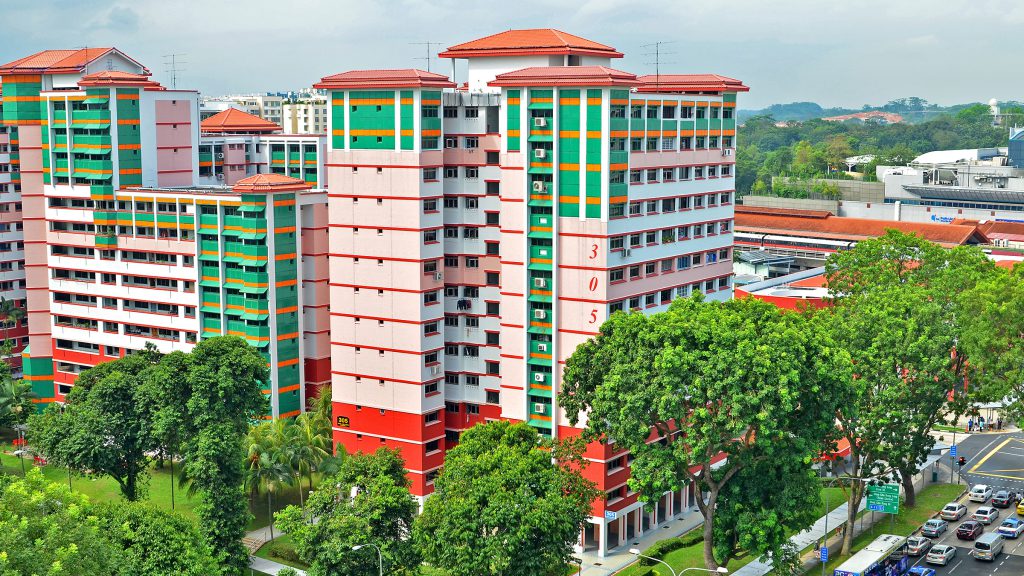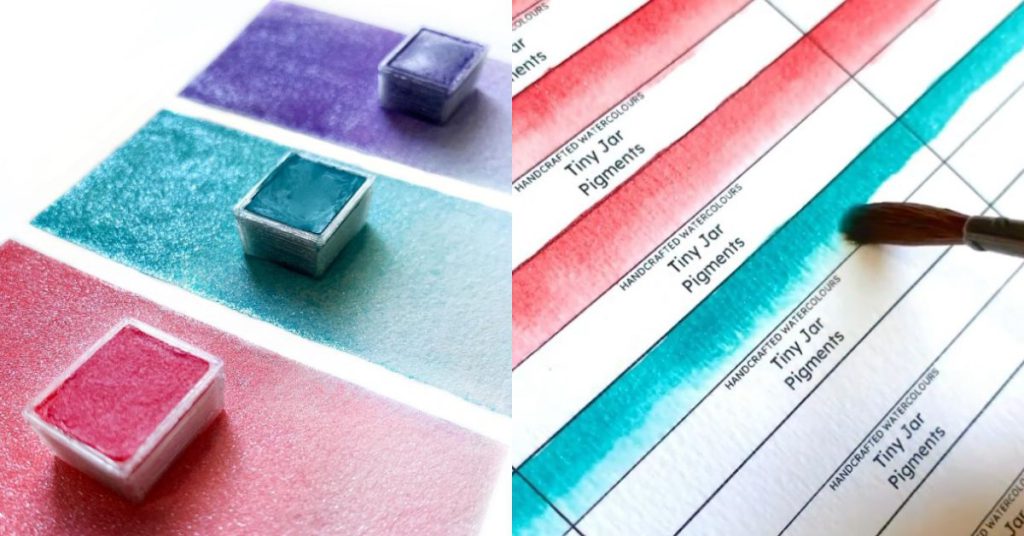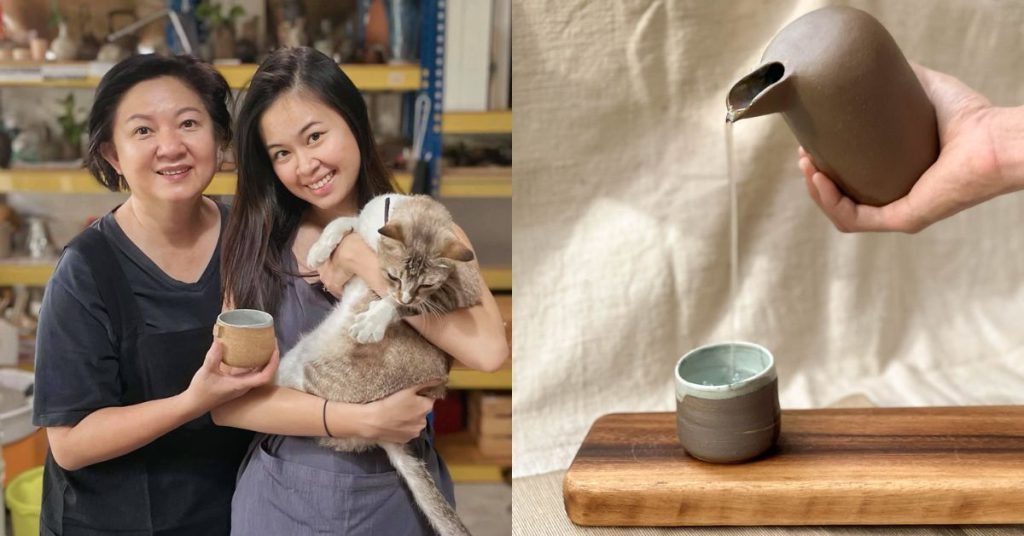MaaS 2.0: Can this transport superapp make a comeback after Zipster’s unfortunate demise?

Have you ever wondered how everything is being offered as a service these days? Since software as a service (SaaS) infiltrated our lives, the -aaS business model has been extended to everything under the sun.
So, why not Mobility as a Service (MaaS)?
MaaS has been touted as a game-changer for urban mobility. By enabling users to plan, book and pay for public and private transport options using a single interface, it aims to facilitate seamless travel and induce people to drive less, or not at all.
For cities struggling to reduce emissions and promote sustainability, MaaS sounds like a promising solution.
From Helsinki to Sydney, MaaS has been implemented with varying successes. Can this innovation ever live up to its hype, or is it time to move on?
MaaS in Singapore
Way back in 2014, the Land Transport Authority (LTA) launched Smart Mobility 2030, a master plan outlining how Singapore will optimise transport systems and enhance the commuter travel experience over the next 15 years.
To urban planners, MaaS — with its ability to provide consumers with multiple mobility options — felt like the panacea Singapore needed.
Not only will it support Singapore’s aspiration to become a car-lite society, but it could also solve a perennial problem associated with public transport. Namely, the first- and last-mile challenge.

Fast forward to 2019, MobilityX — a MaaS startup backed by SMRT — introduced Zipster to much fanfare.
Having onboarded mobility solutions such as Grab, Gojek, BlueSG and bike-sharing providers, Zipster had big plans to become a ‘Netflix of transport’.
Like the streaming giant, it would roll out subscription plans and provide discounted rides with its mobility partners. The ultimate goal is to allow users to transfer quickly between different transport services with minimal hassle.
In those early days, there were high hopes for Zipster to become an industry disrupter that provides a convenient and cost-effective solution for day-to-day journeys — except, it did not.
Less than two years after its launch, MobilityX collapsed and joined the ranks of flailing MaaS experiments from around the globe.
Real-world challenges

While MaaS can endow a city with numerous benefits, certain aspects of its business model are too fundamentally flawed to make it commercially viable.
Firstly, public transport is already heavily subsidised. Therefore, a MaaS subscription would need to provide a substantial discount of at least 30 per cent to sway users towards the service.
According to Professor David Hensher, an eminent researcher on MaaS at the University of Sydney, all MaaS is doing is delivering the next fancy trip-planning app.
For it to take-off, it has to have a reward program that goes beyond discounts to other incentives of a broader nature. A slight reduction in fares is not enough to get people interested.
– Professor David Hensher, Director, Institute of Transport and Logistics Studies
There also appears to be little differentiation in using Zipster as opposed to Google Maps. Both give users a comparison of routes and prices, directing users to different operators to book their journeys.
Most importantly, transport operators in Singapore are already known for their all-in-one superapps that provide customers with more than a ride-booking service.
The Grab app, for instance, is already well-established in the market before Zipster’s arrival.
Meanwhile, ComfortDelGro has also invested millions in building a superapp to rival Grab. Known as the CDG Zig, the app allows users to order food, make hotel reservations and book an electric vehicle (EV) charging point.
So far, both transport superapps have succeeded in dominating the market and luring users with reward points through their loyalty programs. As such, it will be hard to convince commuters to switch to a MaaS platform.
Without the incentives and conveniences provided by superapps such as Grab and CDG Zig, one could almost call MobilityX a pointless startup trying to sell a half-baked solution via Zipster, a transit intermediary nobody needed.
With a flawed product that does not attract enough users and seemingly zero prospects of generating revenue, it is no surprise that SMRT and investors pulled the plug, sending Singapore’s first MaaS to an early death.
A return of MaaS?

So far, the successful implementation of MaaS has proven elusive not only in Singapore.
Finnish MaaS firm Kyyti has faced the same hurdles, filing for bankruptcy in 2021 before being acquired by CGI to live another day.
The UK’s first MaaS service in the West Midlands did not fare well either. The trial venture with MaaS Global offered users an all-inclusive monthly package for unlimited access to buses, trams, taxis, and bike-share schemes. However, it failed to attract enough users onboard, and the project was eventually scrapped.
But despite the mixed reviews and constant struggle to make money, there is continued interest in trying to make MaaS work due to its potential to reduce congestion and promote sustainable travel.
Therefore, while MaaS might have departed rather abruptly from our shores, there is definitely a chance for a comeback.
But rather than leave it in the hands of private startups, the resurrection of MaaS should be a government initiative as it will be driven by public transport operators willing to subsidise services.
That way, savings can be directly passed on to consumers without going through a third-party seeking a profit between transactions.
In addition, the next iteration of MaaS should maximise simplicity and convenience by providing real-time traffic updates and being completely integrated.
That means users can pay for a train ride, followed by a bike or private-car hire in a single step instead of being directed to another app.
There is still hope that MaaS can be the answer to help Singapore achieve its car-lite vision and become an even more liveable city.
But for now, we can always rely on good old Google Maps to plan a trip, followed by a first-world problem of deciding whether it shall be Grab or Zig that we pledge our loyalty for our last-mile journey home.
Featured Image Credit: Zipster
Also Read: This 28-year-old’s mobility tech startup offers on-demand bus sharing for as low as S$2/trip
How inflation makes increasing property prices in S’pore a bigger problem than it already is

Disclaimer: Opinions presented below belong solely to the author.
It’s no secret that inflation is probably one of the top concerns for Singaporeans right now.
Inflation this year has hit record levels, and many are wondering how they can cope with it. After all, inflation means that every dollar that you have buys you less than before, including those in our CPF and bank accounts.
Some youngsters are resorting to risky investments like cryptocurrency so that their incomes keep pace with inflation. Additionally, housing is another key concern for many Singaporeans, especially those who have yet to own a piece of property under their name.
Young Singaporeans are also moving towards rentals rather than buying property, and many have cited a lack of savings as a key reason.
Last week, one of our writers opined that households have gotten richer over the pandemic, and that despite the increase in inflation, property values have provided a valuable hedge against inflation.
So what gives? Are Singaporeans better off because of the property prices, or not?
Homeowners have cause to celebrate
Homeownership rates in Singapore are impressive, standing at around 88.9 per cent. This has been a core focus of government policy, and these properties are seen as an asset.
So certainly, property prices in Singapore have generally been on the rise, and the past year has not been an exception. In fact, given how this trend runs counter to global property markets, there are already concerns about a possible property bubble in Singapore.
Leaving aside the discussion of a property asset bubble in Singapore, rising property prices might be good news. Since the rise in property value outstrips inflation, buying property is generally a good idea to beat inflation and keep your purchasing power.
Homeowners can therefore rejoice, kind of. More valuable property means that you are, at least on paper, richer. But since you cannot exactly spend a house to buy your everyday groceries, the point is also moot.
Homeowners are protected against inflation, but since cashflow factors like income remain unchanged, how much do they actually benefit from this, unless they are willing to sell their property and downgrade?
Many are homeowners, but there are also many who are not
This analysis breaks down when we consider the different types of Singaporeans. As with most economic trends, there is bound to be an uneven impact, so it helps to examine who gains and who loses from the status quo of government housing policy.
While most Singaporeans own their homes, this does not mean that the distribution of those who own their homes is homogenous throughout all age groups.
66 percent of young Singaporeans are choosing to rent instead of buy due to lack of savings. The price of resale HDB flats has also seen an increase, and have doubled since around 2007. As a result, rentals have also seen astronomical growth, and are expected to continue growing.
This means that far from having their properties serve as a valuable hedge against inflation, these Singaporeans have to spend more on their housing needs instead.
Given that 40 per cent of consumers are already seeing their income growth lag behind inflation, this is a serious cause for concern.
Taking stock of all these changes, it means that Singapore’s youths are beset on all sides with challenges — lower savings, higher expenditures, and record inflation are making homeownership less attainable. It’s no wonder that consumer sentiments on property affordability are also dropping.
What about government help?
Singapore has prided itself on its high proportion of home ownership and thus far, a good job has been done.
Part of the reason this has been achieved is that the government offers significant housing grants in addition to allowing Singaporeans to use their CPF to buy new BTO flats.
But have these grants been keeping pace with the rising costs?
The last update to BTO grants was in 2019, not too long ago. But the quantity of the grant indeed leaves something to be desired.
Singles who apply for a resale flat grant can get up to S$80,000, up from the previous amount of S$60,000. Couples or families get double the amount — so as a whole, grant amounts have increased by 33 per cent.
Yet, since 2007, the price index of HDB resale flats has jumped from around 80 to its current high of around 160, meaning that the prices of flats have doubled from around 15 years ago and are continuing to rise.
Unless grant amounts continue to increase, Singaporeans who hope to own their homes will still have to pay a larger proportion of the total price — and set an even higher threshold for their savings before they can afford to buy.
It’s time to relook housing policy
Despite this, housing policy in Singapore so far has provided most Singaporeans with a roof over their heads, and the ability to own these roofs. For this, we must acknowledge and recognise that housing policy in Singapore has largely been successful thus far.
However, that is not to say that there are no issues to resolve.
In Terry Pratchett’s novel ‘Men at Arms’, the main character Sam Vimes provides a theory for how the rich stay rich, and at the core of it is the issue of affordability.
In Singapore’s context, this theory applies to homeowners and renters.
Continually rising housing prices mean that housing is increasingly unaffordable, and as pointed out in the article, renting in Singapore in such a market is probably the best way to become poor.
Since houses are appreciating assets, and grants are not keeping up, the youth are the ones who are forced to foot the bill at the end of the day.
And it is not that the youth do not want to buy, but they simply cannot buy due to the increased prices. With time, this will become extremely problematic.
Since the youth are forced to rent, they cannot save enough to buy, and the market will become dominated by those who continually accrue profits from rents, and allow them to continually amass property to continue bolstering their wealth.
Meanwhile, youths will continue to rent, with no way out of the situation since they cannot afford to buy their homes but still need a place to stay.
Balancing economic incentive with societal needs
That being said, landlords do provide a valuable service to society, since they provide housing for those who would otherwise be unable to afford it.
By buying up property and then renting it out, it makes housing far more liquid — instead of having to buy a house, those who cannot afford to buy can pay to use a small part of the property, and this opens up avenues for the less wealthy to fulfil their housing needs without breaking the bank.
But we should also recognise that there is the possibility of rent-seeking behaviour being taken too far. Landlords who buy extra properties in order to profit from renting are also driving up demand for houses, and causing the increases in price.
Not only do they already benefit from the price increases in the property that they already own, but they also benefit from being able to ask for higher rents when property prices increase. In addition, since they own the properties that they rent out, any benefits from this additional property appreciating in value also accrue to the landlord.
In effect, renters are getting the short end of the stick on multiple fronts, and landlords can enrich themselves at the expense of renters.

Some control may soon become necessary in order to even the playing field. At present, the issue is that housing prices are too high for new prospective homeowners to buy, and this is an issue that needs to be addressed.
But at the same time, we should be careful not to throw the baby out with the bath water.
There are elements of housing policy that remain desirable. Having Singaporeans own their homes, and allowing those who are more well-off to buy leftover properties to rent out, is something that is healthy for the economy.
Instead, it is the worst excesses that such a system allows for that should be curbed.
A flexible cap on rent determined by the cost of the property, for example, could ensure that rents do not climb to astronomical amounts while providing security for the landlord’s investment.
More stringent restrictions on who can apply for new flats and buy new property could also help to reduce any speculative pressure within the property market.
Most significantly, housing needs have to be reprioritised. Having HDB flats and property as an asset for Singaporeans to cash out on in the future is good and desirable, but attaining this goal should not come at the expense of citizens not being able to own their homes and being forced to rent.
At the end of the day, houses should be built for living in, not for enrichment and speculation.
There is much to be thankful for in terms of the government’s housing policy over the past several decades, but whether or not housing policy can continue to serve Singapore well is a different issue — and on this issue hinges the future of social mobility and prosperity for all.
The sentiment that “if you were born poor, it’s not your fault; but if you die poor, it is” has become a popular saying in the modern day. While there is certainly some truth to this, there are also many hidden assumptions that cannot be taken for granted, and having an even playing field is one of them.
Featured Image Credit: Reuters
Also Read: Disposable incomes in S’pore surge by nearly 10% thanks to growing salaries and GST vouchers
You won’t find these watercolours in art stores, they’re paint-stakingly made by this M’sian

[Parts of this story were taken from a video interview we did with the founder in December 2021.]
Van is a watercolour hoarder, and she doesn’t feel bad about it. In fact, she’s proud of it.
After all, it’s a habit that enables her to sustain and develop her small business, Tiny Jar Pigments.
A year ago, she had over 200 different kinds of pigments, maybe more, she mused. Some were sold in sets, which made it hard to truly keep count.
With all the investment in her pigment collection, it’s natural to assume that art is the Penangite’s full-time job.
Turns out, though, she’s actually working in the medical field, and her side hustle making unique watercolours at Tiny Jar Pigments was something she only got into during the pandemic.
She finds lots of satisfaction in her full-time job, but acknowledged that it’s very stressful and demanding.
Thus, a decade ago, she turned to art as an escape after a long day of work, and has never looked back since.
She began with collecting watercolours, until one day when she realised that she could actually make her own.
Today, she runs Tiny Jar Pigments from home as a one-woman show, creating handcrafted artisanal watercolours from scratch.
Making paints from pigments
Van’s focus with Tiny Jar Pigments is creating highly pigmented granulating watercolour paints. Briefly, watercolours can be granulating or non-granulating paints.
Granulating paints are made of denser pigments, which will be deposited on a paper’s grooves instead of settling evenly on a painted surface. This creates a more textured look, usually described as speckly or mottled.

According to Van, these paints are great for landscape paintings or special effects.
While one might think that making paints seems fairly straightforward—blend some pigment with a special binding liquid and tadah! you have paint—it’s the patience that one must practise throughout which makes it difficult.
Depending on the type of pigment and humidity, Van shared that it can take three to four weeks to develop a single colour.
The process involves adding dry pigments on a glass palette, adding gum arabic (a binder that increases colour vibrancy and extends the drying time of a paint), then folding and mulling it (dispersing pigments into a painting medium AKA the gum arabic).
It’s admittedly simple, but it can take a while to mull the paint into the desired smooth consistency, and even after that, you’re still not done. Next comes the drying time.
Watercolour paints have to be air-dried once they’re poured into a pan. Van recalled the one time she tried to rush the process by putting all her pans into her oven, which led to everything melting.

She’s never done that again, opting to air-dry them in an air-conditioned room instead. On her free days, she would make as many paints and colours as she can, then try and fit them into a collection.
And this is where the truly challenging part comes in: naming her creations. If she runs out of creative juices though, she turns to her friends for ideas.
Based on her Shopee store, she’s made 16 or so collections thus far, with each one sold in limited quantities.
Curated collections versus commercialised colours
Though still uncommon to see in Malaysia, Tiny Jar Pigments isn’t the only handcrafted artisanal watercolour maker around, with names like Aidafiqs Handmade, meitallics by inezcalligraphy, and Jubilant Colors active, to name a few.
It’s difficult to compare their prices on a 1:1 ratio due to the pigments, binders, and packaging used, but Tiny Jar Pigment’s creations can range from RM15 to RM250, while the others are as follows:
- Aidafiqs Handmade: RM15 to RM277;
- meitallics by inezcalligraphy: RM36 to RM188;
- Jubilant Colors: RM69 to RM239.
Based on our own research, these handcrafted watercolour paints tend to be slightly pricier compared to popular, commercialised brands such as Daniel Smith and Holbein.
What seems to draw artists to these smaller local brands is their unique colours and collections, as well as the lack of stabilisers and fillers (as some brands proudly state).

For context, fillers help brands cut down on the cost of pigments by allowing them to use less, while stabilisers give the paints a more uniform consistency. However, these two ingredients may make paints look less pigmented.
Perhaps the limited edition nature of some products like Tiny Jar Pigment’s collections add to its draw too (no pun intended).
A dream come true
Most recently, Van released a collection called “Tales of the Gods”, a wooden pan collection inspired by Greek mythology.
It’s currently the only collection that’s still in stock on her Shopee store, though it’s available in limited quantities too.
Though it appears as though life does get in her way of creating watercolours at times (leading to short breaks), she can’t keep herself away from Tiny Jar Pigments for long.
She shared, “Tiny Jar Pigments is like my dream come true, and it’s still unravelling right before my eyes. I don’t know where it will take me, I’m just hoping that it will take me to places where I can collect more rare pigments.”
A simple yet fulfilling goal, one might say.
-//-
This interview was done as part of our previous Vulcan Post video series, Pandemic-Born.
You can watch Van’s video interview here:
Also Read: To help SMEs expand in M’sia, Lalamove offers affordable, on-demand interstate deliveries
Featured Image Credit: Tiny Jar Pigments
Charge+ partners Goldbell Financial Services to lower EV ownership costs with charging credits

Charge+ and Goldbell Financial Services (GBFS), the financial subsidiary of Goldbell Group, announced today (November 30) a strategic partnership to lower both the upfront and operating costs of electric vehicle (EV) ownership.
This partnership will enable EV drivers to gain access to GBFS’ financing solutions and Charge+’s charging network in public housing, condominiums, shopping malls and office buildings.
EV drivers are able to enjoy up to three months of free charging credits, followed by three months of discounted charging credits when they take up an EV loan with GBFS.
GBFS is the first and only non-bank financial institution to date to offer charging credits in conjunction with EV loans.
The online car loan application process with GBFS is seamlessly integrated with MyInfo via Singpass and enables consumers to obtain pre-approved car loans, subject to satisfactory credit checks.
This will help potential car buyers understand their maximum loan amount and estimated monthly instalments, thus providing a greater peace of mind when planning a car purchase.
Following the loan disbursement, Charge+ will contact eligible customers to guide them through the process of accessing the charging credits via the Charge+ app, available for use at any of its public charging locations islandwide.
Charge+ currently has a network of more than 700 EV charging points in Singapore, but it is looking to ramp it up to about 6,000 by 2025.
“Drawing on our extensive experience in automotive financing, we firmly believe that we can play a pivotal role in accelerating the economy’s decarbonisation transition. The partnership with Charge+ moves us one step closer to our goal of catalysing the progression towards a low-carbon economy for future generations through flexible financing solutions,” said Alex Chua, Chairman of GBFS.
“The key bottlenecks to EV adoption in Singapore have been high upfront costs of EV and accessibility to convenient EV charging infrastructure. Therefore, Charge+ is proud to partner GBFS to spur EV adoption by lowering the cost of EV ownership and making the EV charging experience hassle-free. This partnership with GBFS means Charge+ can create more value for our EV drivers beyond just EV charging,” added Goh Chee Kiong, CEO of Charge+.
Featured Image Credit: Charge+ and GBFS
Also Read: This startup offers EV battery swapping for corporate fleets – clients include Singpost, Ninja Van
She’s finally pursuing a life-long interest in pottery after retiring, now it’s a hobby biz

Jasmine Chong’s foray into pottery started seven years ago as a way for her to cope.
At the time, both of her children were furthering their studies overseas, and Jasmine’s husband just had been diagnosed with cancer.
“When you’re talking about cancer, it’s not a personal sickness,” Jasmine expressed. “It’s a family sickness.”
Finding herself in need of a lot of therapy, she turned to the art of pottery. However, Jasmine shared that she has always been interested in the craft.

She recalled her childhood days in Johor, where there had been a construction site near her home. Here, she would dig up clay and play with it.
Jasmine’s artistic streak continued into her adult life. At the Malaysia Institute of Art, she studied fine arts in her first year, then spent her second and third years in interior design—a field that she would pursue as a career.
“In fine arts, we actually had to select an extra subject,” she shared. “Unfortunately, there was a very limited slot for pottery, so I missed that lesson.”
Of course, there were art schools and hobby centres offering pottery classes, but the prices were too expensive.
But decades later, Jasmine found herself playing with clay again—this time in a more polished manner.
Passion first, business second
Pottery quickly became a big part of Jasmine’s life, so much so that she eventually started her own home-based, small-batch food-safe ceramics art brand, Silo.
“I never thought that this thing can become a business,” Jasmine shared. “In fact, I wouldn’t call this a business, even today.”

Rather, Jasmine considers pottery as something she does on a hobby basis. Her stint in interior design also started out as a hobby, but later turned into a full-fledged business.
“That’s when all the stress came in,” she said.
So when she ventured into pottery, Jasmine decided she did not want to treat it as a business, but as a hobby and interest instead.
As such, she seldom takes orders. This is also because clients typically have plenty of expectations and demands.
“To me, to comply with those expectations is a stress,” Jasmine points out. “And I try to live without stress.”
However, customers can check if Silo is open to recreating and selling some designs from their social media by WhatsApping them.

Her daughter She Mun’s involvement in handling Silo’s social media content likely helps take away some of the stress.
Besides Silo, her daughter also runs her own cafe in Kota Kemuning by the name of NOTA, which carries some of Jasmine’s pieces.
Due to her responsibilities, She Mun’s presence in Silo is limited to the marketing side of things. Still, Silo Ceramic Art can be seen as a mother-daughter effort.
“She saw what I was doing, and she saw my progress,” Jasmine shared. “She loves this particular trade as well.”
An experimental approach
Now, Silo’s Instagram page boasts over 2,000 followers—an sizable audience that Jasmine did not expect.
When asked about why she thinks she managed to capture her followers’ interest, the potter said, “I don’t know. Probably a lot of people like my concept.”
Elaborating, Jasmine shared that she doesn’t follow the traditional way of pottery, where many standards and rules apply.

Ever the carefree spirit, Jasmine prefers a less structured approach and creating more experimental projects which involve a lot of trial and error.
Her fluid approach to the craft also means she takes on projects at her own time and pace.
“When you have the mood to do it, you can do it from day to night,” she explains. “But if you really don’t have the mood to do it, you might stay away from it for two, three weeks.”
Jasmine also seldom conducts workshops, as they take up a lot of time. Plus, she doesn’t really have a passion for teaching.
“I don’t have the patience,” she admits. “Unless it’s a small group and friends who want to try it out.”
Crafting a robust industry
When Jasmine decided to take up pottery seven years ago, she realised that the issue she faced in school was still there.
“I had difficulties looking for teachers, and I’m sure the teachers also had difficulties looking for students,” she said.
But in recent years, Jasmine noticed a sudden wave of new potters and lessons. She believes this is due to social media and the growth of the arts and crafts industry at large, which she said is influenced by east Asian trends.

However, like most other industries, the pandemic threw a wrench in this movement. Jasmine herself was unable to fire her clays as no one could service her kiln. Unable to do the firing, all she could do was throw clay, leaving her with no finished product to sell.
Thankfully, with the influx of bazaars and markets, many local potters including Silo have been able to recover and make a name for themselves.
She hopes this will encourage others will pick up pottery as a hobby too.
“Looking at the scenario now, there is so much stress in everybody’s life, especially the younger generation,” she said. “I think pottery is good for that. It’s good for healing.”
Broader horizons
From mixing the clay to shaping it, Jasmine does everything on her own, which explains why the turnaround time for Silo is rather slow.

As such, her products sell out very quickly. Even so, the potter has no plans to hire any helpers.
However, showing me the cluttered background that is her home-based studio, Jasmine shared that she’s considering moving to a new space in Subang sometime next year.
Besides that, she said that she doesn’t have any big plans in store.
“I’ll just follow the flow and take whatever opportunities that I think I grab,” she added, staying true to her nature.
Also Read: To help SMEs expand in M’sia, Lalamove offers affordable, on-demand interstate deliveries
Featured Image Credit: Silo